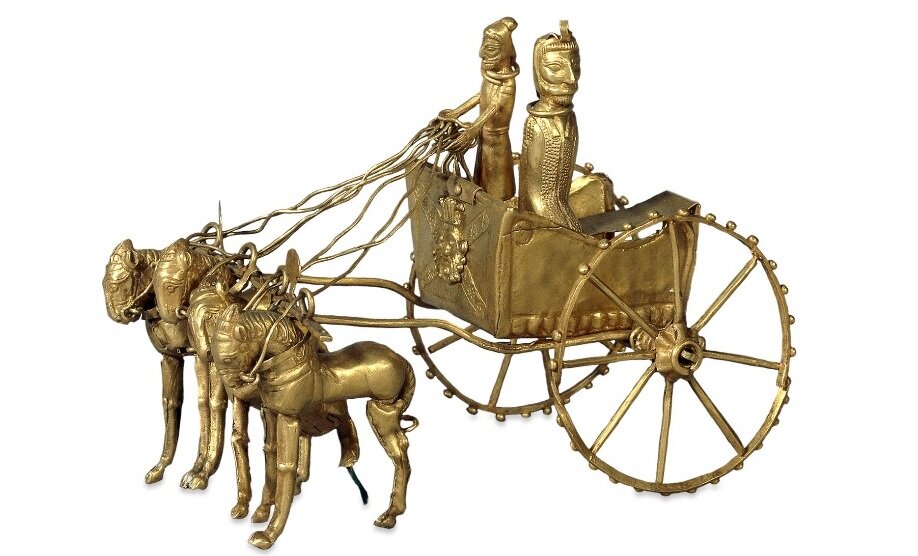Earliest evidence of metalworking on Tehran plain dates back to 5th millennium BC, study suggests

TEHRAN – A recent archaeological survey suggests that the earliest evidence of metalworking on Tehran plain dates back to the 5th millennium BC.
“A survey conducted by the Research Center for the Protection and Restoration of Historical-Cultural Monuments showed that the metalworking activities on the Tehran plain began at the end of the fifth millennium,” Iranian researcher Freshteh Rahimi said on Sunday.
This research seeks to draw a map and locate sites with evidence of metalworking and to collect archaeological and anthropological information on related cultural findings, Rahimi said.
Moreover, researchers of the survey try to collect information from interdisciplinary studies conducted on metalworking findings.
In addition, the same project is planned to examine possible traces of prehistorical metalworking in the provinces of Semnan, Alborz and Qazvin.
She added that the existence of various metal mines on Iran's central plateau has had a significant effect on the way of life of the local populace.
“One of the key subfields of economic archeology, ancient metallurgy and mining, is thought to be well-suited for study in the northern region of the plateau.”
The evidence shows that the northern part of the central Iranian plateau passed the important stage of copper ore smelting and reached the stage of alloy production at the end of the fifth millennium BC, the researcher stated.
Examining sites such as Cheshmeh Ali, Shagaleyn, Tepe Sofalin, Meymanatabad, Chaltasian and Mamourin with evidence of metalworking shows that metalworking activities in the Tehran plain began at the end of the fifth millennium, Rahimi explained.
She said that economic and social developments were the most important developments in the Tehran Plain occurred in the early Chalcolithic or Copper Age (4,700 BC to 4,000 BC) in the Tehran region.
Evidence shows those societies made significant progress in economic and social arenas compared to the previous eras, Rahimi concluded.
Glimpses of coppersmithing in ancient Iran
When studying the history of copper use, it is best to divide it into the Chalcolithic or Copper Age, the Bronze Age, among other eras. Copper is thought by some anthropologists to have been the first metal used by humans because of its softness and simplicity of manipulation.
The archeological findings at [Tepe] Sialk and other mining areas like Talmesi and Anarak, as well as Tall-e Eblis, suggest that several of the earliest copper extraction sites were found in Iran.
According to Encyclopedia Iranica, the sites that have yielded the most ancient evidence in Iran on copper smelting are the first and second levels of excavation at Sialk, which is undoubtedly older than Tall-e Eblis. It has been suggested that the oldest copper mine in Iran was Talmesi, which probably supplied the raw material needed for the furnaces at Sialk.
During the 5th and 4th millennia BC in Iran, craftsmen were able to create enough heat to reach temperatures required for the melting of most of the then known raw materials, and thus extract metals.
On top of that, copper-smelting techniques became well known in various parts of Iran in this period. With the advancement of the knowledge of metallurgy in the Achaemenid era, finely crafted copper and bronze objects were created, continuing through ancient times.
Although copper is mentioned in geographical texts much less often than precious metals, it appears to have been mined over wide areas of Persia in early Islamic times.
In a travelogue inscribed by the medieval Arab traveler Abu Dolaf, he wrote about the Neyshabur copper mine, though the extent of the deposits in Iran became known only from accounts of European travelers from the Safavid period onwards. Sir John Chardin (1643-1713), for instance, wrote that “copper is found in Sari, Khorasan and Qazvin. However, Iranian copper is not malleable. It has to be mixed with copper from Sweden and Japan to make it soft.”
The physician and traveler Engelbert Kaempfer, who resided in Persia in the 1680s during the reign of the Safavid Shah Solayman (r. 1666-94), wrote: “Kerman possesses enormous resources of copper. Copper is found in Khorasan as well.”
As metalworkers drew away from manuscript sources and evolved their own decorative traditions, copper was less favored than the more prized metal, silver, as a material for inlays.
Objects apparently made of unalloyed copper survive in very small quantities from early Islamic times. The general rarity of early Islamic copper objects is probably because they were normally purely utilitarian, beaten out of sheet copper, and left undecorated for town or village use; they would have been melted down and reworked when old.
In the 15th century, however, decorated objects made of tinned copper became common. The reasons for this change are unclear, but may have been related to the gradual dwindling of interest in inlaid base metals and the return to precious metals for luxury objects.
In Safavid era, tinned copper seems to have been common throughout Persia, whence the taste spread to Mughal India. The designs on most Safavid tinned-copper objects seem to have been derived from the Timurid tradition, rather than that of the Turkman dynasties, though some are related in style to Safavid painting. For example, a group of objects with figural decoration has been linked to western Persia in the second quarter of the 17th century. Furthermore, the products of the copper-sheet maker and the coppersmith in the 20th century.
AFM
